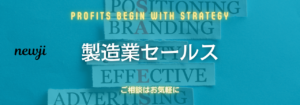- お役立ち記事
- Market trends and procurement strategies in exporting healthcare products

Market trends and procurement strategies in exporting healthcare products

目次
Understanding Market Trends in Healthcare Exports
The healthcare industry is a dynamic field with constant innovations and evolving market trends.
When it comes to exporting healthcare products, understanding these trends is crucial for businesses to remain competitive.
In recent years, there has been a significant growth in the global demand for healthcare products due to factors such as aging populations, technological advancements, and the increased focus on health and wellness.
One of the most notable trends is the increased demand for telemedicine tools and remote healthcare solutions.
The global pandemic has accelerated the adoption of digital healthcare, as more people seek to access medical advice and treatment from the comfort of their homes.
This shift has opened new opportunities for exporters of telemedicine software, wearable health devices, and other digital health solutions.
Another key trend is the growing importance of personalized medicine.
With advancements in genetic research and biotechnology, healthcare is increasingly moving towards personalized treatments tailored to individual genetic profiles.
This trend has significant implications for exporters of pharmaceuticals and biotech products, as demand for these customized solutions continues to rise.
Technological Advancements Driving Demand
Technology plays a pivotal role in shaping the healthcare export market.
Innovations in medical technologies, such as artificial intelligence and machine learning, are enhancing the accuracy of diagnostics and treatment.
Exporters of medical devices and diagnostic equipment are seeing increased demand as healthcare providers seek to adopt these cutting-edge technologies.
AI-powered diagnostic tools, for example, are becoming vital for early detection of diseases and conditions.
These technologies are in high demand in regions with limited access to healthcare specialists, making them a lucrative opportunity for exporters.
Additionally, the rise of the Internet of Medical Things (IoMT) is transforming patient care through connected medical devices.
These devices collect patient data in real-time, allowing healthcare providers to monitor and respond quickly to any health issues.
Exporters of IoMT solutions are finding new markets as hospitals and clinics look to integrate these technologies into their care protocols.
Procurement Strategies for Exporting Healthcare Products
Adopting effective procurement strategies is essential for success in exporting healthcare products.
Businesses must ensure they meet international regulations and quality standards to compete in the global market.
They must also cultivate relationships with reliable suppliers and logistics partners to ensure a smooth supply chain.
Compliance with International Standards
Compliance with international health and safety standards is a critical factor in exporting healthcare products.
Each market may have its own set of regulations, which can differ significantly from one country to another.
It’s vital for exporters to acquaint themselves with these regulations to avoid potential legal issues or trade barriers.
Engaging a knowledgeable regulatory affairs advisor can be an advantageous step.
Such professionals can help navigate the complex legal landscape, ensuring all products meet the necessary health and safety standards.
This not only prevents costly penalties but also builds trust with buyers who are assured of the product quality.
Building Strong Supplier Relationships
A dependable and efficient supply chain is the backbone of any successful export strategy.
Developing strong relationships with suppliers ensures the availability of high-quality raw materials and components necessary for manufacturing healthcare products.
Communicating clearly and regularly with suppliers is essential.
This allows exporters to anticipate potential shortages or delays and adapt accordingly.
Moreover, it provides an opportunity to negotiate better terms and pricing, which can enhance competitiveness and profitability.
Efficient Logistics and Distribution
Effective logistics and distribution strategies are paramount when exporting healthcare products.
Selecting the right logistics partners can significantly impact how swiftly and safely products reach their destination.
Consider partners that specialize in healthcare logistics, as they possess the necessary expertise and equipment to handle sensitive products.
Investing in temperature-controlled shipping solutions, for example, is crucial for products like medicines and vaccines that require specific storage conditions.
Additionally, exploring digital logistics solutions can improve transparency and efficiency in the supply chain.
Innovative technologies such as blockchain can ensure secure tracking of shipments, mitigating the risk of counterfeit products and increasing customer trust.
Navigating Market Challenges
Exporting healthcare products comes with unique challenges that businesses must address to ensure success.
Market competition, fluctuating regulations, and changing consumer preferences are among the hurdles exporters face.
Addressing Competition
The healthcare export market is highly competitive, with many players aiming to capture global demand.
Differentiating your products through innovative features and superior quality can set your brand apart.
Conducting thorough market research can provide insights into competitors’ strengths and weaknesses.
This information can guide the development of strategies to enhance product offerings and identify new market opportunities.
Adapting to Regulatory Changes
Regulatory environments in different countries are continually evolving.
Staying informed of these changes is crucial to ensure uninterrupted market entry and compliance.
Subscribing to industry publications and joining relevant trade associations can help keep exporters updated on regulatory shifts.
Additionally, maintaining an agile operational structure facilitates quick adaptation to new requirements.
Understanding Consumer Preferences
Consumer preferences in healthcare are continually shifting, driven by factors such as emerging health concerns and cultural differences.
Exporters need to understand these preferences to tailor their products to meet specific market needs.
Engaging in market research and consumer surveys can provide valuable data on trends and demands.
This information can drive product innovation and marketing strategies that resonate with target audiences.
By understanding market trends and implementing strategic procurement practices, businesses can successfully navigate the challenges of exporting healthcare products.
Adaptability, compliance, and a focus on innovation are key to capturing global market opportunities in this thriving industry.
 資料ダウンロード
資料ダウンロード
QCD管理受発注クラウド「newji」は、受発注部門で必要なQCD管理全てを備えた、現場特化型兼クラウド型の今世紀最高の受発注管理システムとなります。
 NEWJI DX
NEWJI DX
製造業に特化したデジタルトランスフォーメーション(DX)の実現を目指す請負開発型のコンサルティングサービスです。AI、iPaaS、および先端の技術を駆使して、製造プロセスの効率化、業務効率化、チームワーク強化、コスト削減、品質向上を実現します。このサービスは、製造業の課題を深く理解し、それに対する最適なデジタルソリューションを提供することで、企業が持続的な成長とイノベーションを達成できるようサポートします。
 製造業ニュース解説
製造業ニュース解説
製造業、主に購買・調達部門にお勤めの方々に向けた情報を配信しております。
新任の方やベテランの方、管理職を対象とした幅広いコンテンツをご用意しております。
 お問い合わせ
お問い合わせ
コストダウンが利益に直結する術だと理解していても、なかなか前に進めることができない状況。そんな時は、newjiのコストダウン自動化機能で大きく利益貢献しよう!
(β版非公開)





